Greening – a step toward wellbeing
Research shows convicted persons who do horticulture or spend time in the garden are affected by numerous positive changes. They rarely behave in a self-destructive manner, they seldom take part in illegal activities, they become less prone to drug abuse, anxiety, depression, and risky behavior, they are more willing to accept assistance, they rarely report health issues, and have a lower recidivism rate. It is also confirmed that gardening or spending time in the garden during the enforcement of prison sentences causes positive and long-term emotional and psychological changes in convicted persons. It has also been noticed that convicted persons who participate in such programs rarely behave in an unfriendly manner, that they gain self-confidence and self-respect more easily, that they develop the capability to resolve problems and make decisions as well as the feeling of responsibility.
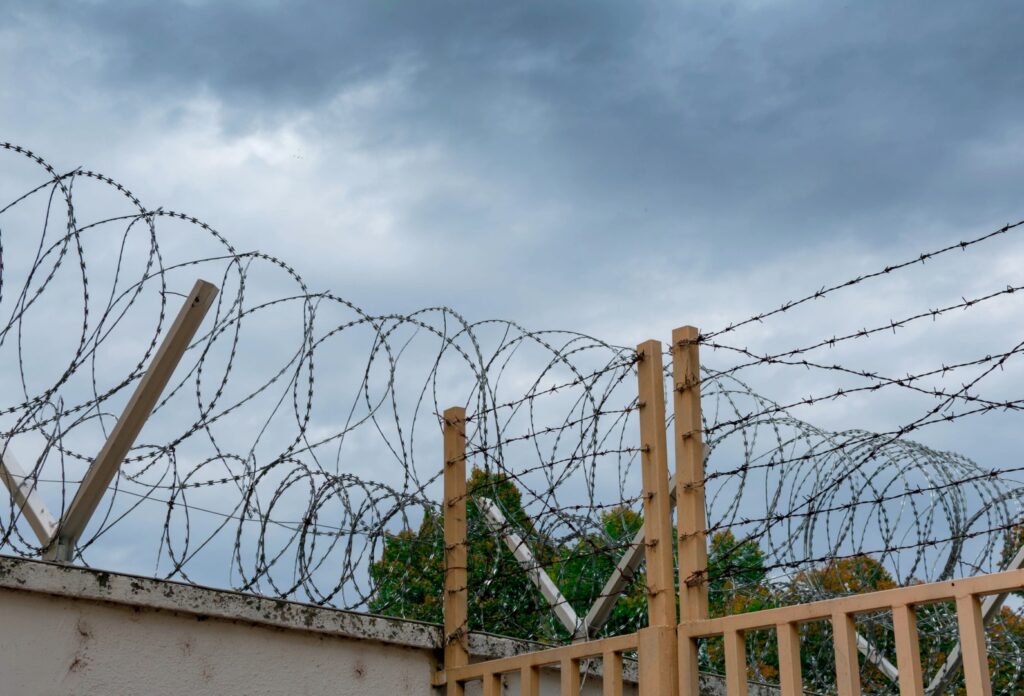
Photography 1: Penal-correctional institution in Niš. Author: Ana Batrićević. The photograph was made for the purpose of research about the greening of prison communities, the results of which were published in the book: Pavićević, O. Ilijić, Lj., & Batrićević, A. (2020). Susret društvenog i biološkog ozelenjavanje zatvorskih zajednica. Belgrade: Institute of Criminological and Sociological Research.
Legal Frameworks for the Greening of Institutions for the Enforcement of criminal sanctions in Serbia
The right to a healthy environment is guaranteed by the Constitution of the Republic of Serbia, according to which all citizens are responsible for environmental protection and have the duty to conserve and upgrade it. The Constitution of the Republic of Serbia prohibits discrimination, which means that the right to a healthy environment belongs to all citizens, including those deprived of liberty. The Law on Environmental Protection contains a large list of entities that are considered responsible for its conservation and there are no obstacles for penal institutions to be a part of it, to the extent in which they conduct activities of environmental significance. The Law on Environmental Protection obliges various subjects to encourage awareness raising on the importance of environmental protection through education, which can also be done in penal institutions.
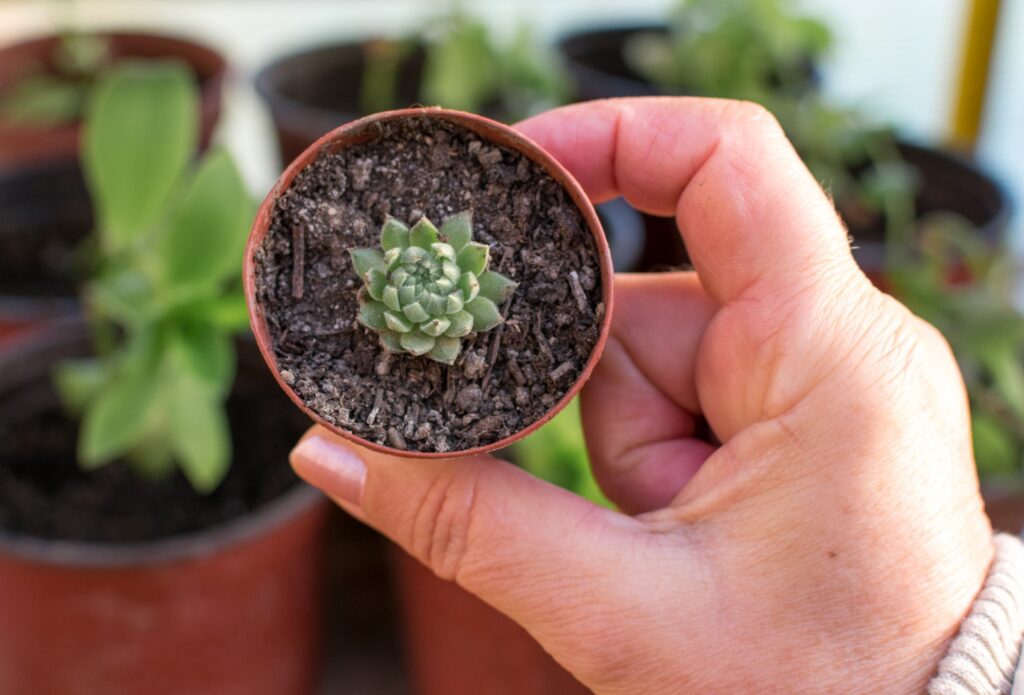
Photography 2: Penal-correctional institution for women in Požarevac. Author: Ana Batrićević. The photograph was made for the purpose of research about the greening of prison communities, the results of which were published in the book: Pavićević, O. Ilijić, Lj., & Batrićević, A. (2020). Susret društvenog i biološkog ozelenjavanje zatvorskih zajednica. Belgrade: Institute of Criminological and Sociological Research.
The normative framework for the enforcement of criminal sanctions in Serbia leaves space for the implementation of greening in penal institutions. The Law on Enforcement of Criminal Sanctions prescribes that the purpose of criminal sanctions consists of re-socialization and social reintegration, and the greening of spaces where convicted persons spend their time is aimed at enhancing these processes. Therefore, it can be said that the greening of penal institutions contributes to the fulfillment of the purpose of criminal sanctions. Deprivation of liberty does not include constant staying indoors, but includes outdoor activities within the prison complex. The only limitations are derived from the essence of liberty deprivation, the nature of the prison life regime, and security requirements. Deprivation of liberty depends on the type of penal institution. Greening involves the engagement of convicted persons on various working programs, but also their education in the field of horticulture, which makes the provisions of the Law on Enforcement of Criminal Sanctions that regulate labor and education of convicted persons relevant for this issue.
Implementation of greening in penal institutions
The greening of penal institutions may include the engagement of convicted persons within their work or therapy programs, but it can also be implemented by other persons. The programs of gardening for convicted persons are applied as therapeutic programs that encourage their personal growth but also represent a reward for decent behavior. Such programs have an educational aspect as well since they contribute to the development of ecological awareness and enable the participants to obtain the knowledge necessary for legal employment and a source of income after serving the sentence. In the majority of penal institutions, convicted persons obtain a certificate confirming their knowledge from this field, which increases not only their employability but also their self-confidence and self-respect.
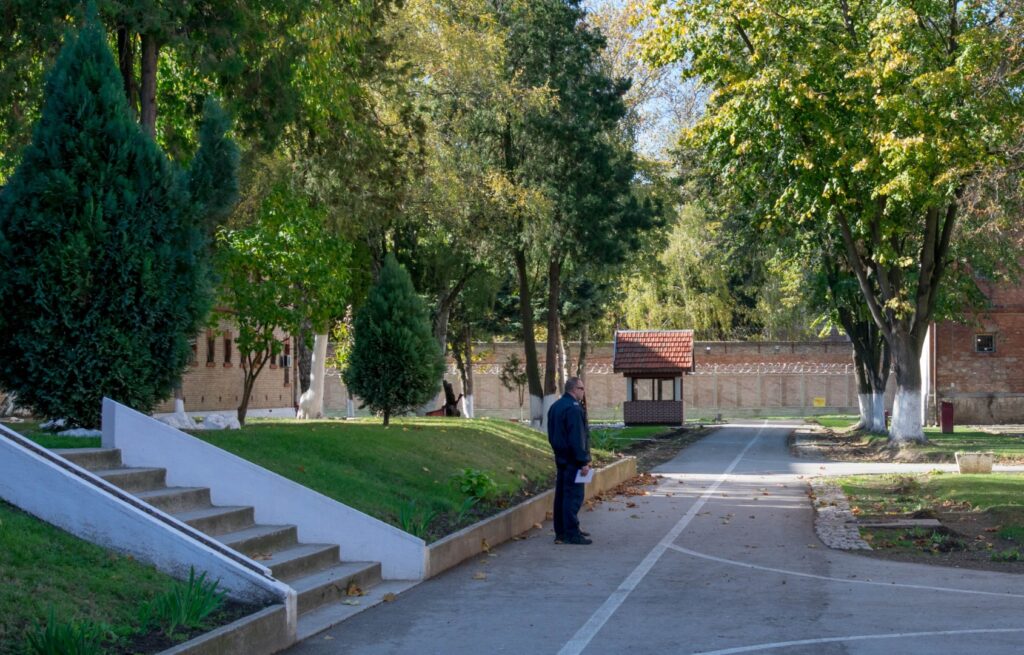
Photography 3: Penal-correctional institution in Sremska Mitrovica. Author: Ana Batrićević. The photograph was made for the purpose of research about the greening of prison communities, the results of which were published in the book: Pavićević, O. Ilijić, Lj., & Batrićević, A. (2020). Susret društvenog i biološkog ozelenjavanje zatvorskih zajednica. Belgrade: Institute of Criminological and Sociological Research.
Penal-correctional institution in Sremska Mitrovica
PCI in Sremska Mitrovica dedicates a lot of attention to greening and it also cooperates with public enterprises “Srbija šume” and “Vojvodina šume” and participates in various forestation activities. The institution has 750 hectares of arable land, where convicted persons work. Out of that, 7 hectares are covered with fruits – pears, apples, and prunes. There are also two greenhouses covering around 50 ares. The institution implements a project within which convicted persons are taught to grow fruit that is sold on the market. Convicted persons also plant vegetables and vegetables that are produced in the institution are used for their meals.
Penal-correctional institution in Požarevac-Zabela
PCI in Požarevac-Zabela has around 3 hectares of zones under trees, including the forest and park, which makes the entire space surrounded by vegetation planted by convicted persons. Around 180 hectares of arable land, where agricultural species are planted, belong to this institution. Convicted persons participate in agriculture activities and forestation and assist in the “Srbija šume” enterprise. Seasonal vegetables are planted in the outdoor garden and used for the preparation of meals for convicted persons, prison staff, and hotels within the prison complex. Convicted persons also plant flowers, mostly in greenhouses. For several years, this institution has been organizing twice a year a course where convicted persons can learn to plant vegetables in greenhouses.
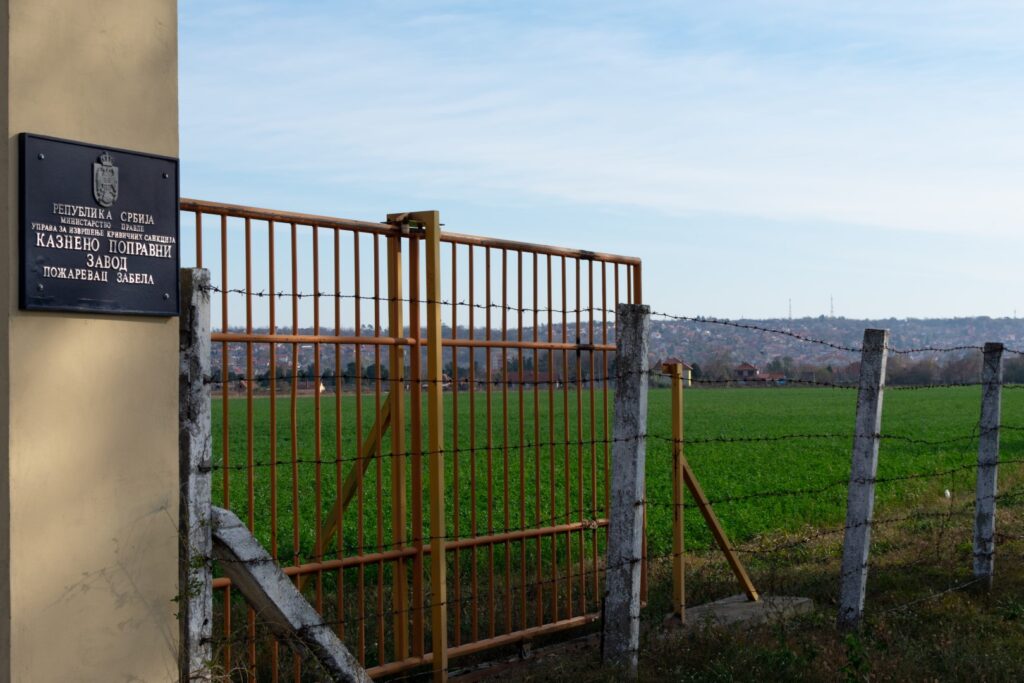
Photography 4: Penal-correctional institution in Požarevac – Zabela. Author: Ana Batrićević. The photograph was made for the purpose of research about the greening of prison communities, the results of which were published in the book: Pavićević, O. Ilijić, Lj., & Batrićević, A. (2020). Susret društvenog i biološkog ozelenjavanje zatvorskih zajednica. Belgrade: Institute of Criminological and Sociological Research.
Penal-correctional institution for women in Požarevac
Greening is highly supported by CPI for women in Požarevac – not only for aesthetics but also for practical reasons. Apart from areas designed for outdoor leisure activities, this institution also has a garden, a greenhouse, and outdoor surfaces where various sorts of vegetables and fruits are planted. Convicted persons take part in the maintenance of green surfaces in the city or at the Ljubičevo paddock. They are interested in horticulture and work under the supervision of prison staff, who monitor their work, and give daily instructions, necessary tools, and protection at work.
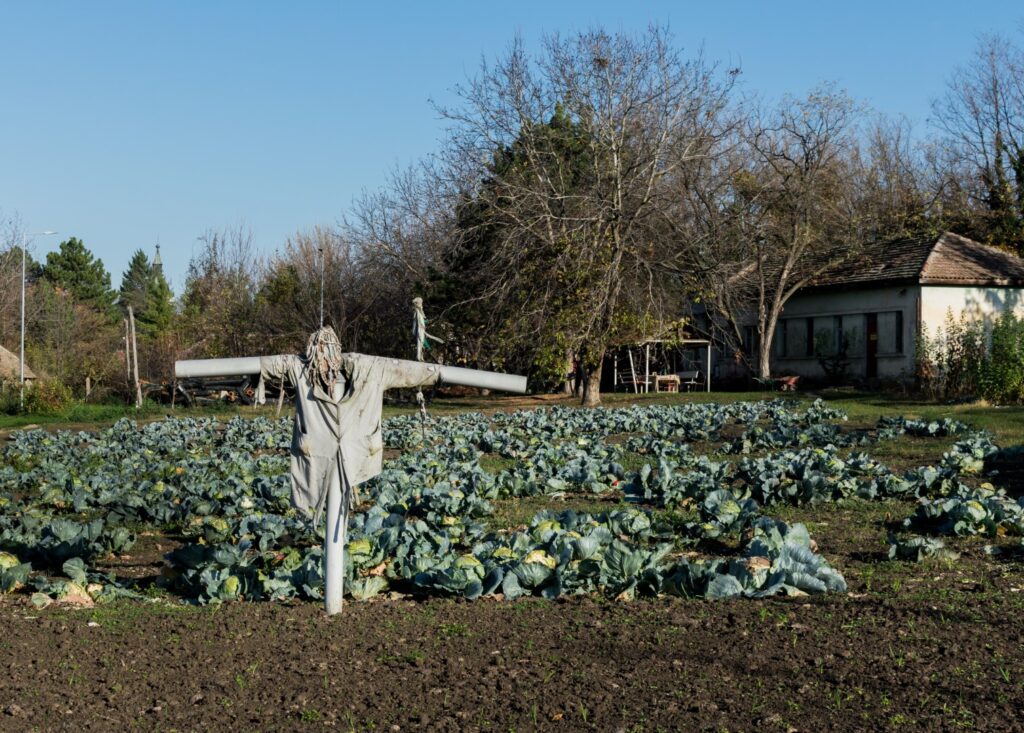
Photography 5: Penal-correctional institution for women in Požarevac. Author: Ana Batrićević. The photograph was made for the purpose of research about the greening of prison communities, the results of which were published in the book: Pavićević, O. Ilijić, Lj., & Batrićević, A. (2020). Susret društvenog i biološkog ozelenjavanje zatvorskih zajednica. Belgrade: Institute of Criminological and Sociological Research.
Penal-correctional institution in Niš
In PCI in Niš, efforts are made to keep the surroundings green and humane, and attention is given to the practical aspect of greening in the sense of working engagement of convicted persons and planting agricultural species. Convicted persons who are willing to do so can participate in the training for plant production and work in agriculture and vegetable production. They also work on the arrangement of green areas and plant flowers inside the institution, make benches and other types of furniture for parks, arrangement of public green spaces, and participate in forestation actions.
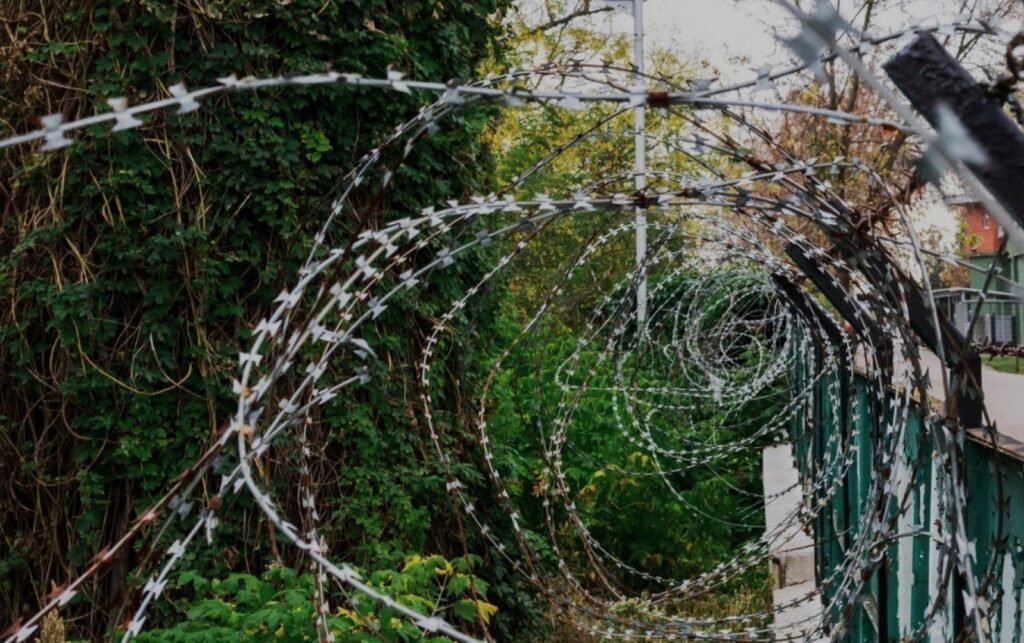
Photography 6: Penal-correctional institution in Niš. Author: Ana Batrićević. The photograph was made for the purpose of research about the greening of prison communities, the results of which were published in the book: Pavićević, O. Ilijić, Lj., & Batrićević, A. (2020). Susret društvenog i biološkog ozelenjavanje zatvorskih zajednica. Belgrade: Institute of Criminological and Sociological Research.
Future of the greening of penal institutions in Serbia
Greening institutions for the enforcement of criminal sanctions is useful for several reasons – for the convicted persons, for prison staff, for the broader community, and the environment. The process of greening brings psychological, aesthetic, economic, and environmental benefits, which is the reason why it should still be given the attention it deserves. Convicted persons are highly enthusiastic about greening and decision-makers are ready to keep working on the greening of penal institutions. Therefore, it can be expected that more surfaces within penal institutions will be covered with vegetation in the future.
Ana Batrićević
